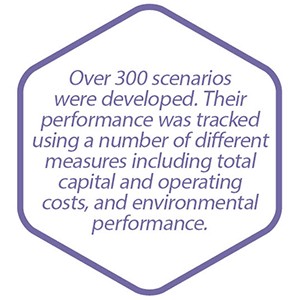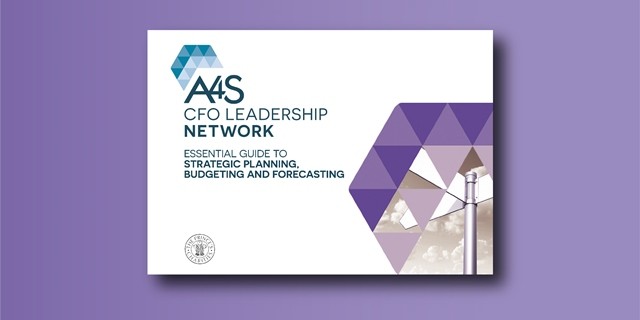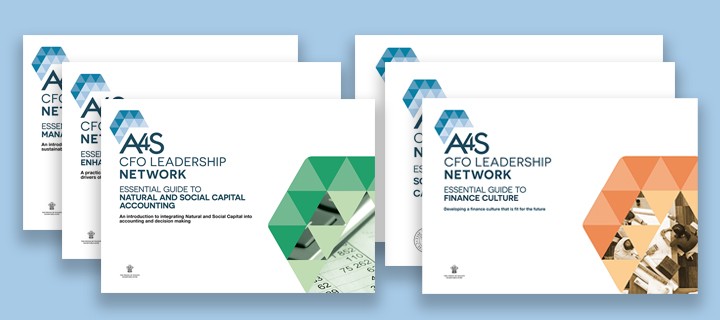Anglian Water: Strategic Planning, Budgeting and Forecasting
Water resource scenario planning
WHY DID YOU UNDERTAKE THIS PROJECT?
We provide water and recycled water services to approximately six million people in the East of England. Over the next 25 years, our ability to maintain the balance between supply and demand will be challenged by macro sustainability trends such as population growth, climate change, growing environmental need and deteriorating raw water quality.
To maintain current levels of service we need to develop new reliable, affordable and sustainable systems of supply as well as reduce demand. To select the schemes that deliver this, we need to make trade offs between various factors including social and environmental costs and environmental performance. Most of the risks arise from uncertainty about timing and the magnitude of the impacts from growth and climate change.
We want to understand the supply and demand scenarios that are considered most appropriate and cost effective for water resource planning. We also want to understand the trade offs between customers’ willingness to pay and reduced levels of service, and whether we should consider other criteria than cost effectiveness. This helps us to define our strategic goals.
To address these issues, we are piloting the Water Resources East project (WRE). The WRE is developing a long term water resource strategy for the Anglian region in collaboration with other water companies, the agriculture sector, the Environment Agency, Natural England and other water users.
WHAT APPROACH DID YOU TAKE IN IDENTIFYING SCENARIOS FOR WATER RESOURCE PLANNING?
The WRE is evaluating new scenario based approaches to long term water resource planning which is based on application of Robust Decision Making (RDM) and multicriteria Strategy Optimization.
Strategy Optimization uses an automated search algorithm to test different strategies against multiple performance criteria and finds those plans that perform best across all modelled future scenarios, and in respect of all performance criteria. In an RDM analysis, the performance of a small number of different options or strategies is tested using a wide variety of plausible future scenarios. The uncertainties which make the plan vulnerable are identified. Using statistical cluster analysis, the options or strategies are updated and then tested again.
WHAT CHALLENGES DID YOU FACE?
While RDM allows for rigorous testing of a small number of strategies or plans and can be used to explore the order in which the selected schemes are delivered, it does not suggest which combination of schemes should be included in the plans in the first place. We therefore used Strategy Optimization followed by RDM.
WHAT WERE THE BENEFITS OF THE APPROACHES USED?
By using 1) Strategy Optimization followed by 2) RDM it is possible to identify optimized, balanced and robust water plans. By presenting optimized plans as performance measure trade off curves (step 1: Strategy Optimization), stakeholders and decision makers can debate and select an appropriate balance of system performance criteria.
Trade off curves allow the identification of which portfolios of new supply and demand management schemes can reach the set objectives. Once one or a few preferred plans are chosen, they can be further refined through iterative testing with a wider selection of future scenarios leading to flexible and adaptive plans (step 2: RDM). This stakeholder led approach allows for more effective, robust and transparent decision making and is an improvement on the current least cost planning methods.
HOW DID THE APPROACHES INFORM YOUR BUSINESS ACTIVITIES?
Over 300 scenarios were developed. In each scenario, the performance of each option or strategy was tracked using a number of different measures, including total capital and operating costs, and environmental performance.
To explore the robustness of a strategy based on combinations of all different options planned for Asset Management Programme 6 (2015-20), a vulnerability analysis was performed. This involved finding future conditions in which the strategy performs relatively poorly. The analysis identified two such scenarios that accounted for 96% of the simulated futures in which the strategy was vulnerable to failure. Iterative amendments can then be made to improve performance, allowing a more robust strategy to be developed.
WHAT WILL SUCCESS LOOK LIKE?
The plans will allow us to perform robustly in most plausible future scenarios. Success for the WRE is a flexible and adaptive plan for delivering a reliable, affordable and sustainable system of supply, which also needs to be resilient to the effects of population growth and climate change.
WHAT HAS HAPPENED SINCE THE PROJECT?
The project has been extended into Asset Management Plan 6 and used to inform our next Water Resources Management Plan and Business Plan.
The project has also been enlarged to the WRE involving more water companies, and more water users, in the East.





